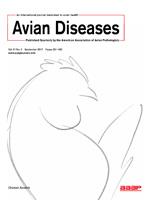Consumption of shell eggs has been associated with Salmonella Enteritidis (SE) infections in humans in the United States. Because of this, the Pennsylvania Egg Quality Assurance Program (PEQAP) was developed and implemented in 1994. The PEQAP involves periodic flock testing and management practices to minimize SE contamination of shell eggs. Subsequently, the U.S. Food and Drug Administration (FDA) introduced a mandatory federal program in 2010 and 2012 for shell egg producers modeled closely after PEQAP to reduce the incidence and prevalence of SE during production, storage, and transport nationwide. In this study, a retrospective epidemiologic analysis was conducted by characterizing SE isolated from commercial layer environment samples and shell eggs submitted to the Animal Diagnostic Laboratory at The Pennsylvania State University using phage typing and pulsed-field gel electrophoresis (PFGE). The objective of this study was to determine the relatedness of SE isolates from hen house environments and shell eggs and to optimize the existing protocols of egg quality assurance programs by identifying the best layer-house environmental sampling time points in order to minimize SE contamination of shell eggs. A total of 94 SE isolates from 65 hen flocks on 35 premises in Pennsylvania recovered during 2007 to 2015 were used in this study. The SE phage type 8 and PFGE fingerprint type JEGX01.0004 most commonly associated with human SE infection was also the predominant type present in layer-house environments and shell eggs. This reconfirms hen house environmental monitoring is an effective method to identify SE-infected flocks. Further, the PEQAP program allowed SE detection of infected flocks earlier than the FDA program as it included an additional environmental test at 29–31 wk of age, enabling the earlier prevention of SE-contaminated shell eggs going to the market. Therefore, it is recommended to refine the sampling time points of the current FDA Egg Rule by adding hen house environmental testing at 29–31 wk of age.
How to translate text using browser tools
20 June 2017
A Retrospective Study of Salmonella Enteritidis Isolated from Commercial Layer Flocks
Thomas N. Denagamage,
Bhushan M. Jayarao,
Eva Wallner-Pendleton,
Paul H. Patterson,
Subhashinie Kariyawasam
ACCESS THE FULL ARTICLE

Avian Diseases
Vol. 61 • No. 3
September 2017
Vol. 61 • No. 3
September 2017
PEQAP
PFGE
phage typing
poultry
Salmonella enteritidis
shell eggs




